|
Earnings from exports soar:
Mineral sand industry booms
By L.S. Ananda WEDAARACHCHI
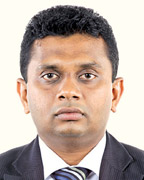
Lanka Mineral Sands Ltd.,
Managing Director Dilshan
Goonasekera |
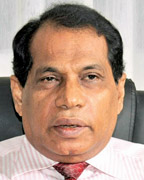
Secretary - State Resources
and Enterprise Development
Ministry Dr. Willy Gamage |
|
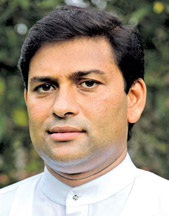
Minister Dayashrita Tissera
|
The mineral sands industry in the eastern coast is expanding, Lanka
Mineral Sands Limited Managing Director, Dishan Goonasekera said.
The mineral sands deposit is one of the most treasured natural
resources in the country. It was discovered by Sri Lankan scientists in
the 1950's.
The mineral sand factory at Pulmoddai set up in 1970 was destroyed by
the LTTE. The factory has been reactivated, he said.
State Resources and Enterprise Development Ministry Secretary, Dr.
Willy Gamage and Lanka Mineral Sands Ltd., Chairman, Dishan Goonasekera
were interviewed by the Sunday Observer recently.
Excerpts of the interview.
Q: Lanka Mineral Sands Ltd., has been transformed into a profit
making venture under the guidance of State Resources and Enterprise
Development Ministry within a period of two years. As Ministry Secretary
would you like to explain the secret behind this success?
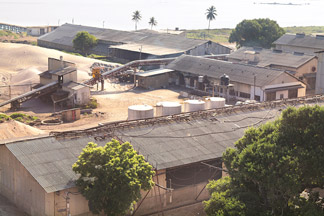 |
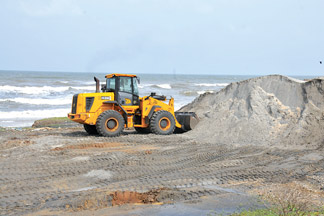
Collecting mineral sand |

Pulmoddai mineral sand factory |
A: The company earned a profit of Rs. 678 million last year.
Dividends of Rs. 572 million was credited to the Treasury. We have
targeted a profit of Rs. 8,400 million for 2011-2012. The targeted
production for the year will be 112,904 mt. Proper planing and the team
work is the secret behind this achievement.
Q: When did mineral sand production commence in Sri Lanka?
A: The Mineral Sand Corporation was set up in 1960 under the
Industrial Act of 1957. The Japanese government provided the technical
and scientific assistance for the project.
Even the first shipment of Ilmenite was imported by a Japanese
company named Ishihara Sino Kaisa in 1962.
The Asian Development Bank provided assistance in 1978 for the
development of the industry.
While the industry was in rapid progress earning billions of foreign
exchange through the export of mineral sand the LTTE brought the
operation of the factory to a standstill in 1983. When it remained
closed for nearly thirty years there was an attempt to sell the factory
during the UNP regime in 2001. The Ministry of State Resources and
Enterprise Development was set up primarily to reactivate the defunct
state enterprises.
Q: In your capacity as Chairman of the company could you explain the
future plans to expand the industry.
A: Mineral sand deposits are found along the eastern coastal belt
from Mulaitivu to Pulmoddai and from there to Kotuwakambi.
This is one of the most treasured natural resources of Sri Lanka.
At present a plan for the scientific and systematic development of
the industry is being implemented under the guidance of State Resources
and Enterprise Development Minister Dayashrita Tissera and ministry
secretary Dr. Willy Gamage. Mineral sand is a hundred percent export
oriented product.
There is a big demand for our mineral sand from industrial countries.
The value of mineral sand had increased sharply during the last couple
of years.
The price of a MT of Ilmenite has increased by 700 percent during the
last two years.
The Pulmoddai factory will be modernised under the development plan.
A new plant will be commissioned within a period of four years. A team
of local and foreign experts had been assigned to make a feasibility
report on the new plant.
Modification and upgrading of the present plant will begin in
November and will be completed within 18 months.
Q: Could you explain the production process of mineral sand?
A: Sea waves bring mineral sand from the sea bed to the beach. Truck
loads of sea sand are brought to the mineral sand factory where mineral
sand are separated from sea sand. It is a highly sophisticated process.
Ilmenite Rutile, Magnatile, Serkon are produced at the Pulmoddai
factory.
Q: Can you explain the demand for mineral sand by industrialised
countries?
A: Mineral Sands such as Ilmenite, Rutile, Serkone, Gakone, Magnetite
are used as a raw material to manufacture paints, paper, ceramic and
medicinal products. Titanium Dioxide-TIO-2 is manufactured using
Ilmenite.
Q: What are the other leading countries that produce mineral sand?
A: Mineral sands deposits are available in USA, Australia and China
where mineral sand content in sea sand is around three percent to five
percent while it is more than 80 percent in Sri Lanka sea sand.
What Sri Lanka needs is an advanced technology to develop the
industry. Negotiations in this regard are held with regional countries,
Europe and USA.
Q: Why don't you go for value added products while exporting raw
materials to industrialised countries?
A: We could fulfil our targets by setting up the proposed second
factory.
We have already held discussions in this regard with countries where
the mineral sand industry is developed. |

